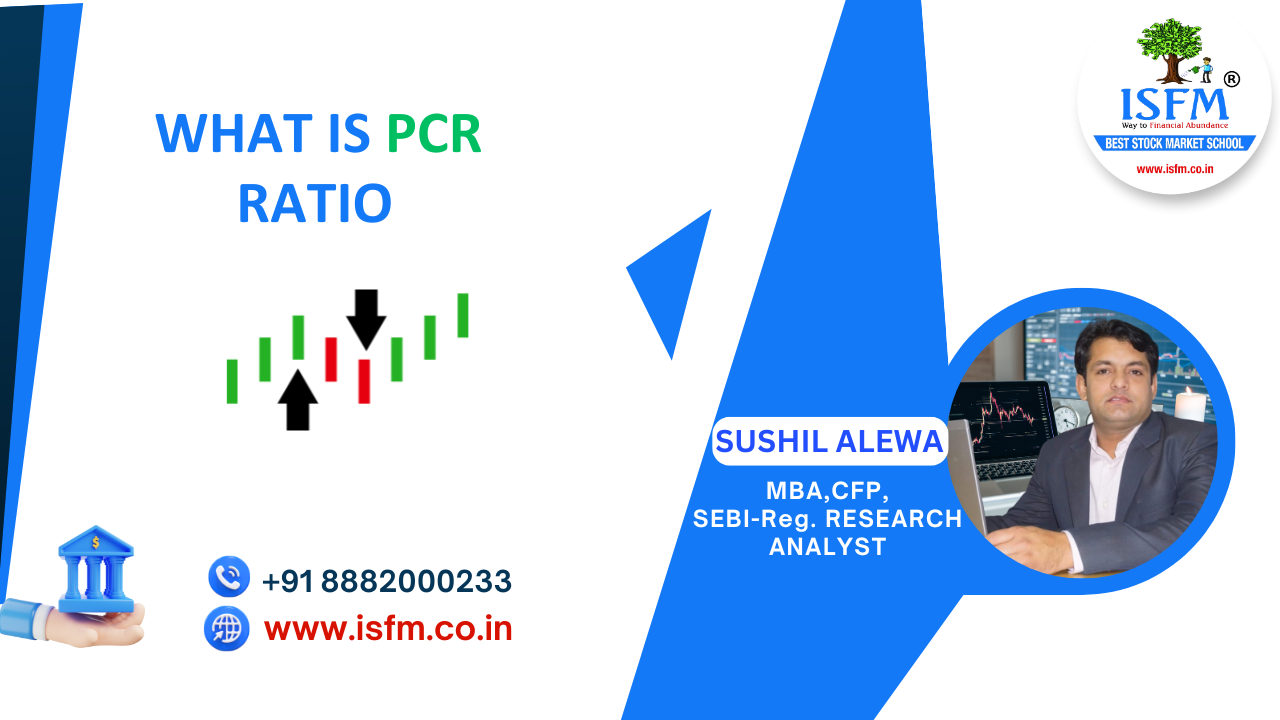PCR Ratio: Mastering Market Sentiment for Smarter Trading Decisions

The Put-Call Ratio (PCR) is a widely-used market sentiment indicator in options trading, helping traders understand whether the market is leaning more towards bearish puts or bullish calls.
Formula:
PCR Ratio=Total Put Volume (or Open Interest)Total Call Volume (or Open Interest)\text{PCR Ratio} = \frac{\text{Total Put Volume (or Open Interest)}}{\text{Total Call Volume (or Open Interest)}}
- Trading Volume PCR = short-term sentiment
- Open Interest PCR = long-term sentiment
Generally:
- PCR > 1.0 indicates bearish sentiment (more puts traded)
- PCR < 1.0 reflects bullish sentiment (more calls traded)
How to Analyze and Interpret the PCR Ratio
- Understand the Context
- PCR > 1.0 = Fear or downside protection
- PCR < 1.0 = Optimism or bullish outlook
- Extreme PCR values (above 1.5 or below 0.5) may signal contrarian opportunities
- Use Historical Averages
Compare PCR against its 10-day or 30-day average.
E.g., If the Nifty 50’s average PCR is 0.9 and it spikes to 1.4, it may indicate excessive bearishness or panic. - Break It Down by Expiry
Analyze PCR for weekly vs. monthly options. A sudden rise in weekly PCR can suggest upcoming short-term volatility. - Pair with Technical Indicators
Combine PCR with RSI, support/resistance, or moving averages.
Example: High PCR + Oversold RSI = Potential buying zone.
Why is the PCR Ratio a Must-Know for Traders?
- Tracks Crowd Psychology: Helps measure greed vs. fear
- Great for Contrarian Moves: Extreme readings often signal upcoming reversals
- Supports Risk Management: Allows for informed hedging strategies
Also Read: Circuit Breakers in the Indian Stock Market: Everything You Need to Know
Key Benefits of Using the PCR Ratio
- Real-Time Sentiment Insight
- Applicable to Stocks, Indices & Commodities
- Favored by Institutional Investors in derivatives markets
Pros and Cons of the PCR Ratio
| Pros | Cons |
| Easy to calculate & interpret | Needs context (e.g., hedging activity vs. speculation) |
| Powerful contrarian trading signal | Not a standalone indicator—requires confirmation |
| Followed by professional traders & analysts | Asset-specific variations (Index PCR ≠ Stock PCR) |
Strategies to Profit Using the PCR Ratio
- Contrarian Trading
- High PCR (>1.5): Market is likely oversold → Consider buying calls or going long
- Low PCR (<0.5): Overbought market → Consider buying puts or shorting
- Protective Hedging
Rising PCR levels during market uncertainty? Hedge with put options to limit downside risk. - Trade the News
Before major events like earnings releases or Fed decisions, monitor PCR for crowd bias and position accordingly. - Technical Confirmation
PCR + Support Level = Strong entry opportunity
E.g., PCR spike + price near 200-DMA = Long trade setup
Frequently Asked Questions (FAQs)
Q1: Can PCR anticipate market crashes?
Not on its own. But extreme PCR readings (e.g., above 1.5) can indicate capitulation or mass panic—often preceding market bottoms. Use alongside macro indicators.
Q2: Where can I check PCR Ratio data?
Visit NSE India, CBOE, or TradingView for up-to-date PCR data.
Q: Is PCR reliable for individual stocks?
Yes, but watch for manipulation due to institutional hedging. For better accuracy, analyze index-level PCR like Nifty or Bank Nifty.PCR Ratio: Mastering Market Sentiment for Smarter Trading Decisions
Q: Is PCR reliable for individual stocks?
Yes, but watch for manipulation due to institutional hedging. For better accuracy, analyze index-level PCR like Nifty or Bank Nifty.
Conclusion: Turn Sentiment Into Strategy
The PCR Ratio offers powerful insight into market psychology. When used with technical tools and a solid risk framework, it can help you anticipate market turns and trade with greater confidence.


